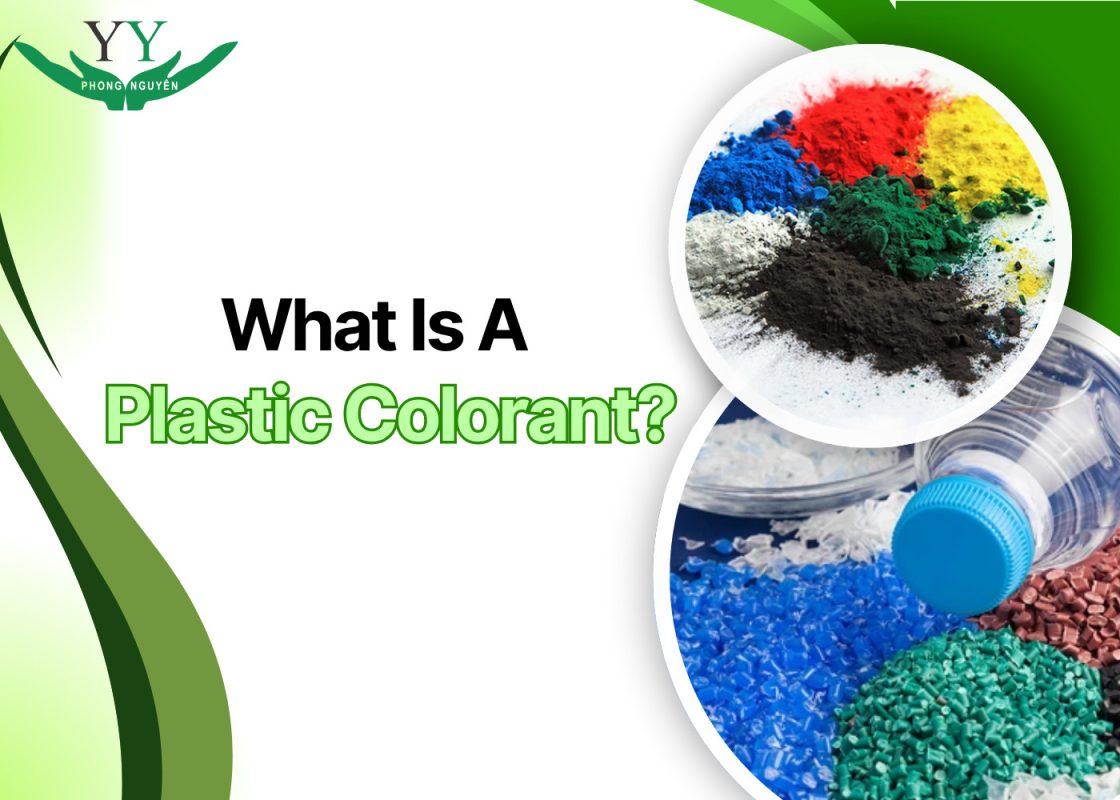In the modern plastics industry, color not only enhances aesthetic value but also plays an essential role in expressing brand identity, categorizing functions, and creating a unique impression for products in a competitive market. To achieve a wide range of vibrant, durable, and uniform colors, manufacturers rely on an important component in the production process, which is the plastic colorant.
So, what is a plastic colorant? And what are the common methods used to color plastic? Let Phong Nguyen guide you through the details in the article below.
What are plastic colorants?
Plastic colorants are compounds capable of generating color in plastics during processing. Thanks to colorants, the final product not only achieves the desired color but also gains enhanced aesthetic and functional value. Plastic colorants can exist in the form of powder, pellets, and are typically added during processes such as injection molding, extrusion, or blow molding, depending on the type of plastic and technical requirements.
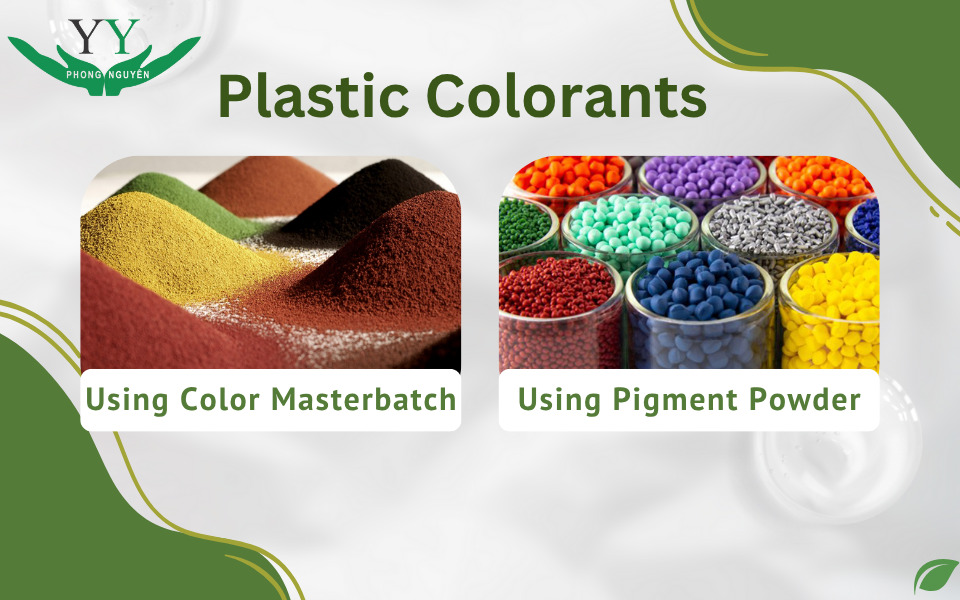
The role of plastic colorants
The distinctive color of a plastic product often allows us to recognize it at first glance. However, behind this eye-catching color lie important roles that are not always obvious, ranging from functionality to brand value.
Enhancing product aesthetics
Color is the first element to impact the visual and emotional perception of consumers when approaching a plastic product. The use of plastic colorants not only makes the product more visually appealing and lively but also expands design creativity. This enables businesses to create a diverse product range that suits many different customer segments.
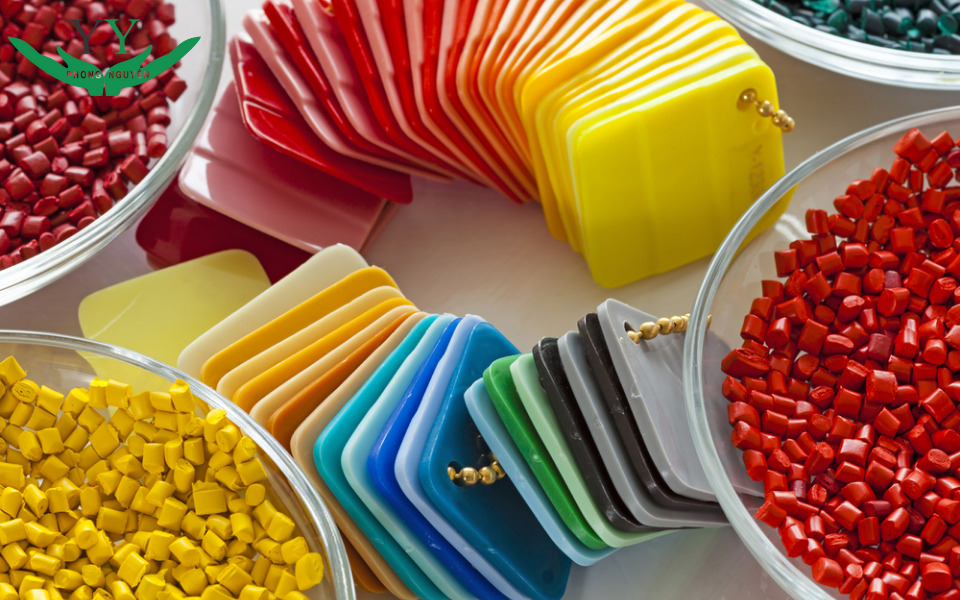
Clear classification and identification
Color serves not only an aesthetic purpose but also a clear identification role by helping to distinguish products based on their function and usage. A common example is that plastic electrical wires often use red for the positive terminal and black for the negative, or that blue plastic containers are typically used in the food industry while yellow ones are common in industrial environments. The proper application of color enhances recognition, usability, and safety.

Strengthening brand value
Color consistency across plastic product lines not only contributes to a seamless aesthetic appearance but also plays an important role in building a strong brand image. When a business uses color consistently, it reinforces brand recognition and conveys professionalism and reliability. As a result, the brand becomes more memorable in the minds of consumers and increasingly asserts its competitive position in the market.

Common coloring methods in the plastic industry
The coloring process for plastic products can be applied using various methods depending on the properties of the raw material, the intended application, and the required quality standards.
Using color masterbatch
Color masterbatch is a compound that is pre-mixed with colorants, base resin and technical additives. This mixture is formed into small pellets that are easy to store, measure, and blend during plastic manufacturing.
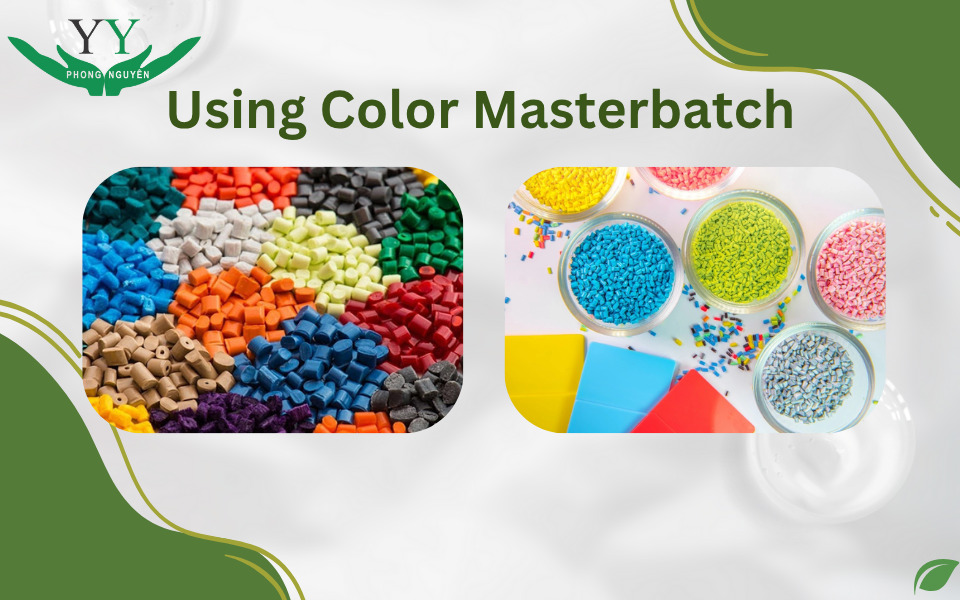
Using color masterbatch ensures color consistency and uniformity across production batches. The pellets disperse easily in the base resin, resulting in vibrant and precise colors without streaks or blotches. This leads to high-quality and visually appealing finished products.

Masterbatch is easy to handle and allows for accurate mixing ratios. In addition, its pellet form helps minimize dust during processing, keeping the production environment clean. This method is ideal for large-scale manufacturing operations that require high levels of quality control and color precision.
Using pigment powder
Alongside color masterbatch, many manufacturers still choose pigment powder as a flexible and cost-effective solution. Thanks to its low cost, ease of color adjustment, and suitability for small production batches, pigment powder continues to hold its place and is often prioritized in various scenarios.
Inorganic pigments
Inorganic pigments are a type of plastic colorant derived from natural minerals or synthesized from metal oxides. With their durability, these pigments are widely used in the plastic industry, especially for products that require high strength and the ability to withstand harsh environments.
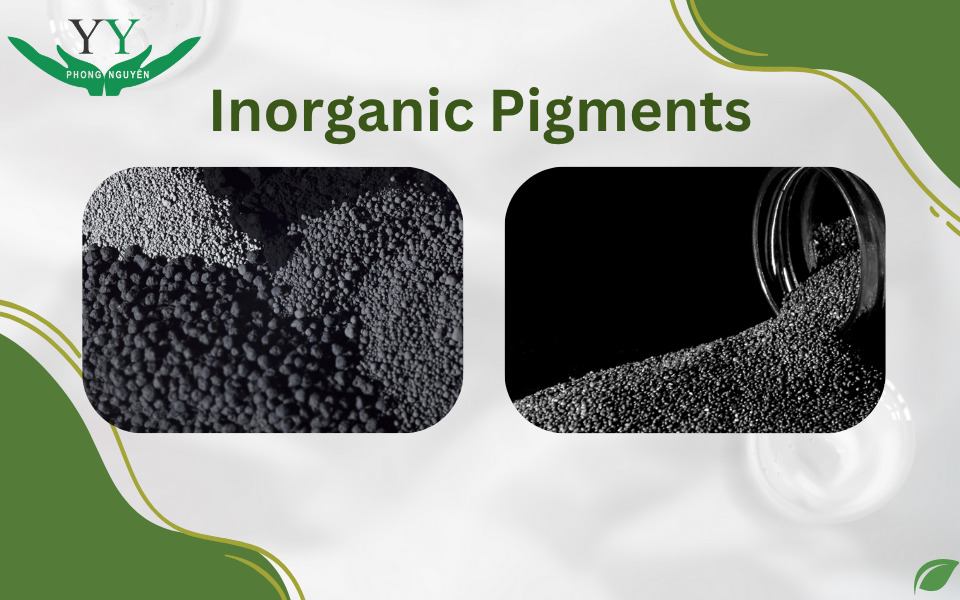
These pigments typically produce muted and opaque colors due to their high refractive index and are not as vivid as organic pigments. However, their key advantages include good heat resistance, excellent color durability under sunlight and ultraviolet exposure, and chemical stability. The particle size is relatively large, allowing for even dispersion and minimal clumping during production.

Because of their low cost and outstanding durability, inorganic pigments such as carbon black are ideal for outdoor plastic products, engineering plastics, plastic pipes, and construction materials. One limitation is that their color range is not diverse, mostly consisting of basic tones such as white, black, brick red, and earthy yellow, making them less suitable for applications that require bright and eye-catching colors.
Learn more: What is Carbon Black? A Key Material in Modern Industries
Organic pigments
Organic pigments are made from synthetic organic compounds, often derived from azo, phthalocyanine, or other chemical groups. Due to their specific molecular structure, this pigment type delivers bright, vivid, and highly aesthetic colors, making them suitable for products that require a strong visual impression.
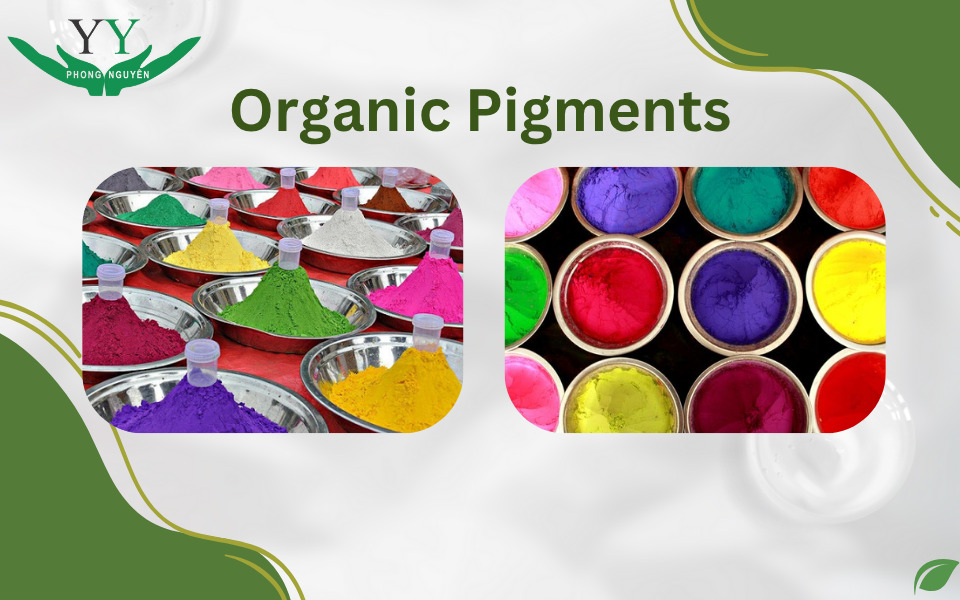
With ultra-fine particle sizes, organic pigments offer good dispersion and high coverage, helping the surface of the plastic product appear evenly colored and sharp. This makes them ideal for industries with high visual standards, such as packaging, toys, consumer goods, and decorative materials.
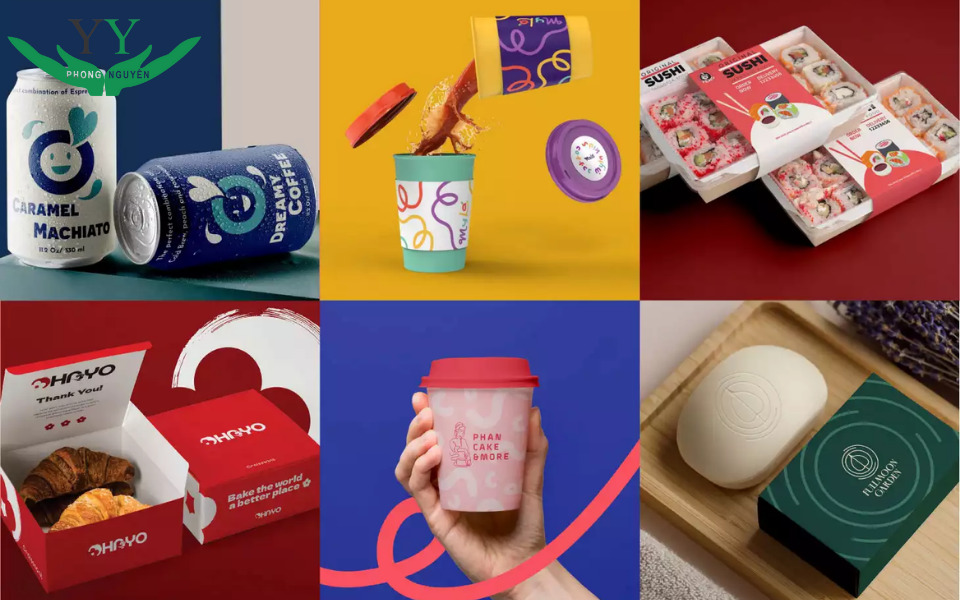
However, the downside of organic pigments is that they are less durable than inorganic pigments. They are more easily affected by ultraviolet rays, strong chemicals, or high processing temperatures, leading to color fading or changes during production. Therefore, careful consideration is necessary when choosing this pigment type for outdoor applications or harsh environments.
Special effect pigments
Special effect pigments are designed to create unique visual effects, serving both decorative and technical purposes. Thanks to their ability to deliver striking surface appearances, this pigment type is often selected to enhance visual value and create distinction in plastic products.
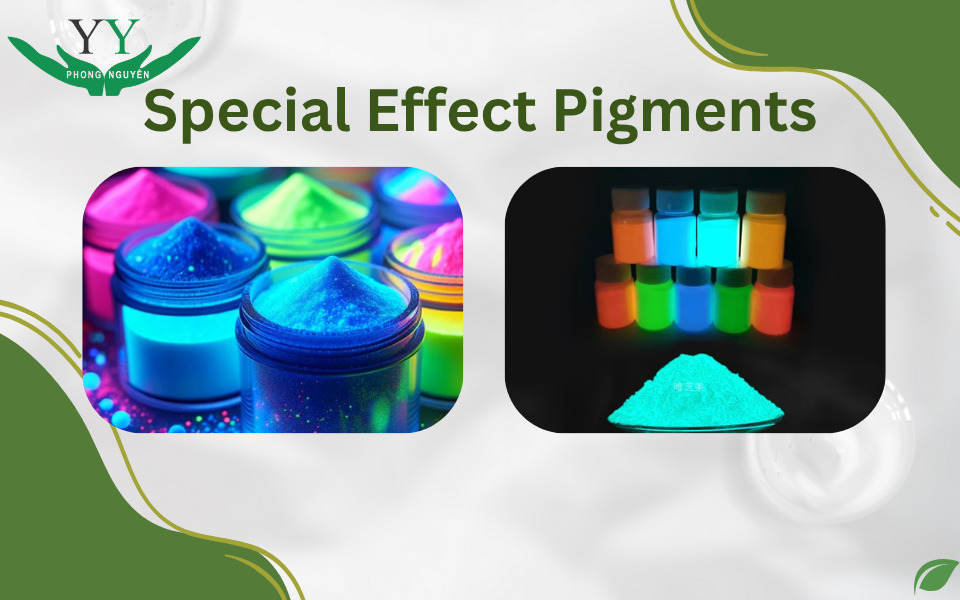
Popular types include metallic pigments that give a shimmering metal-like finish, phosphorescent pigments that glow in the dark or react to ultraviolet light, thermochromic pigments that change color based on temperature, and reflective pigments that improve visibility in low-light conditions and are often used in safety or warning applications.
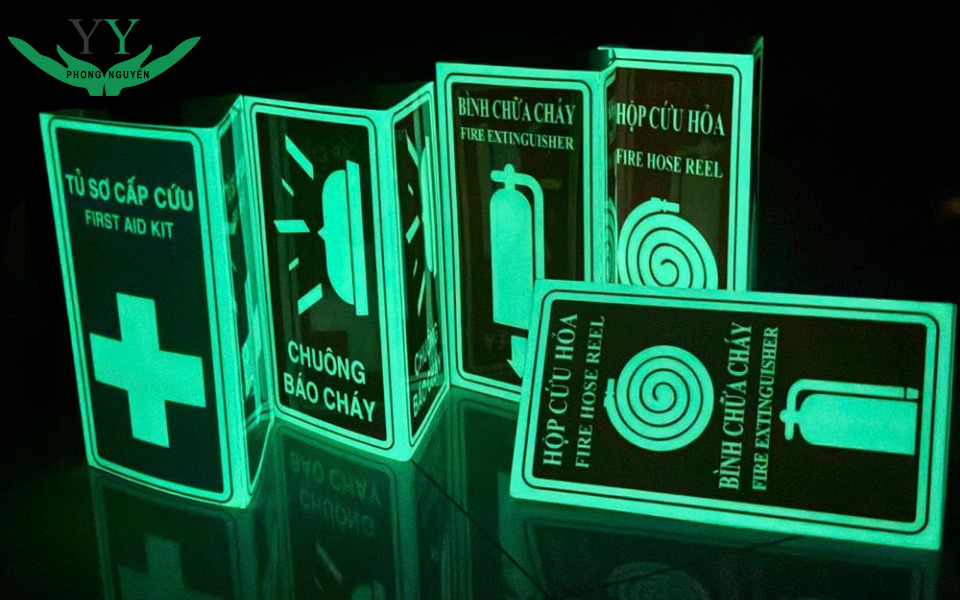
With their ability to create special effects and attract attention, this pigment type is widely used in products that require visual highlights, such as toys, fashion accessories, electronic devices, and promotional items. In these cases, visual appeal plays a vital role in attracting users and increasing market competitiveness.
Key considerations when using plastic colorants
To ensure long-lasting color, high product quality, and safety during use, businesses should carefully consider the following factors:
- Compatibility with the plastic base: The colorant must be suitable for the type of plastic, such as PE, PP, PVC, or ABS. Selecting the wrong type may cause uneven coloring, layer separation, or reduced mechanical strength of the product.
- High heat resistance: Plastic processing usually occurs at high temperatures from 200 to 300 degrees Celsius. Colorants must be stable at these temperatures to avoid discoloration, decomposition, or the release of harmful gases that can affect product quality and workplace safety.
- Light and UV resistance: For plastic products intended for outdoor use, colorfastness under sunlight and UV exposure is a critical factor. Choosing a colorant that resists ultraviolet rays will help prevent fading, degradation, or brittleness over time.
- Safety for consumers: Especially in applications related to food, medical devices, or children’s products, colorants must meet safety standards. They must be free from heavy metals or toxic chemicals to ensure user health and comply with legal regulations.

Conclusion
Plastic colorants not only enhance the aesthetic appeal of products but also play an important role in optimizing usability and reinforcing brand identity. Choosing the right type of colorant along with the appropriate coloring method will help businesses control quality effectively, optimize production costs, and stay aligned with market trends. Phong Nguyen hopes that the insights shared in this article have brought you valuable and practical information. See you again in our upcoming expert content.

